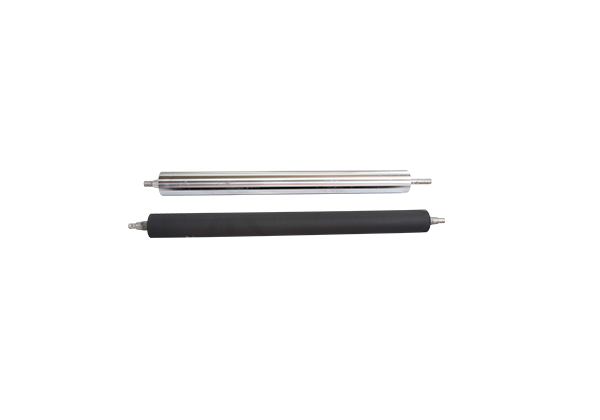Upper Rubber Roller and Steel Roller
the rubber roller provides traction or grip on the film as it moves through the machine. This traction helps to control the tension of the film, ensuring a smooth and steady movement through each stage of the process.
the steel roller provides a smooth and sturdy surface for the film to pass over. It helps to maintain the stability and evenness of the film as it moves through the machine, ensuring consistent tension and preventing any unwanted creases or wrinkles.

The rubber roller in a blown film machine serves several important functions.
1. the rubber roller provides traction or grip on the film as it moves through the machine. This traction helps to control the tension of the film, ensuring a smooth and steady movement through each stage of the process.
2. the rubber roller helps to flatten the film after it has been inflated into a bubble. As the bubble is cooled and drawn upwards, the rubber roller applies pressure to the film, helping to flatten any wrinkles or irregularities and ensure a uniform thickness.
3. the rubber roller can be used to apply specific patterns or textures to the film surface. This is often done for aesthetic purposes or to enhance the functionality of the film, such as creating a non-slip surface.
4. the rubber roller acts as a support for the film as it is wound onto a roll at the end of the process. The roller helps to maintain proper tension and prevents the film from slacking or wrinkling during winding.
Overall. the rubber roller plays a critical role in the blown film machine by providing traction, flattening the film, applying patterns or textures, and supporting the film during winding, ensuring the production of high-quality plastic films.















